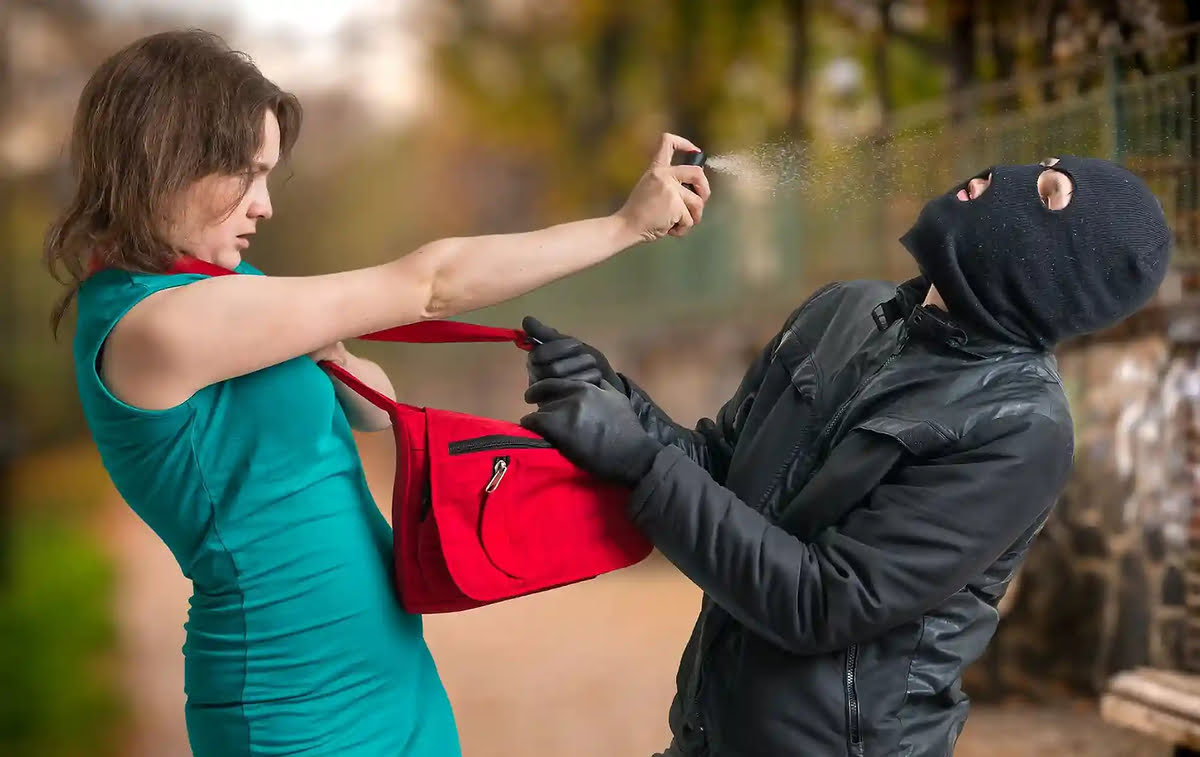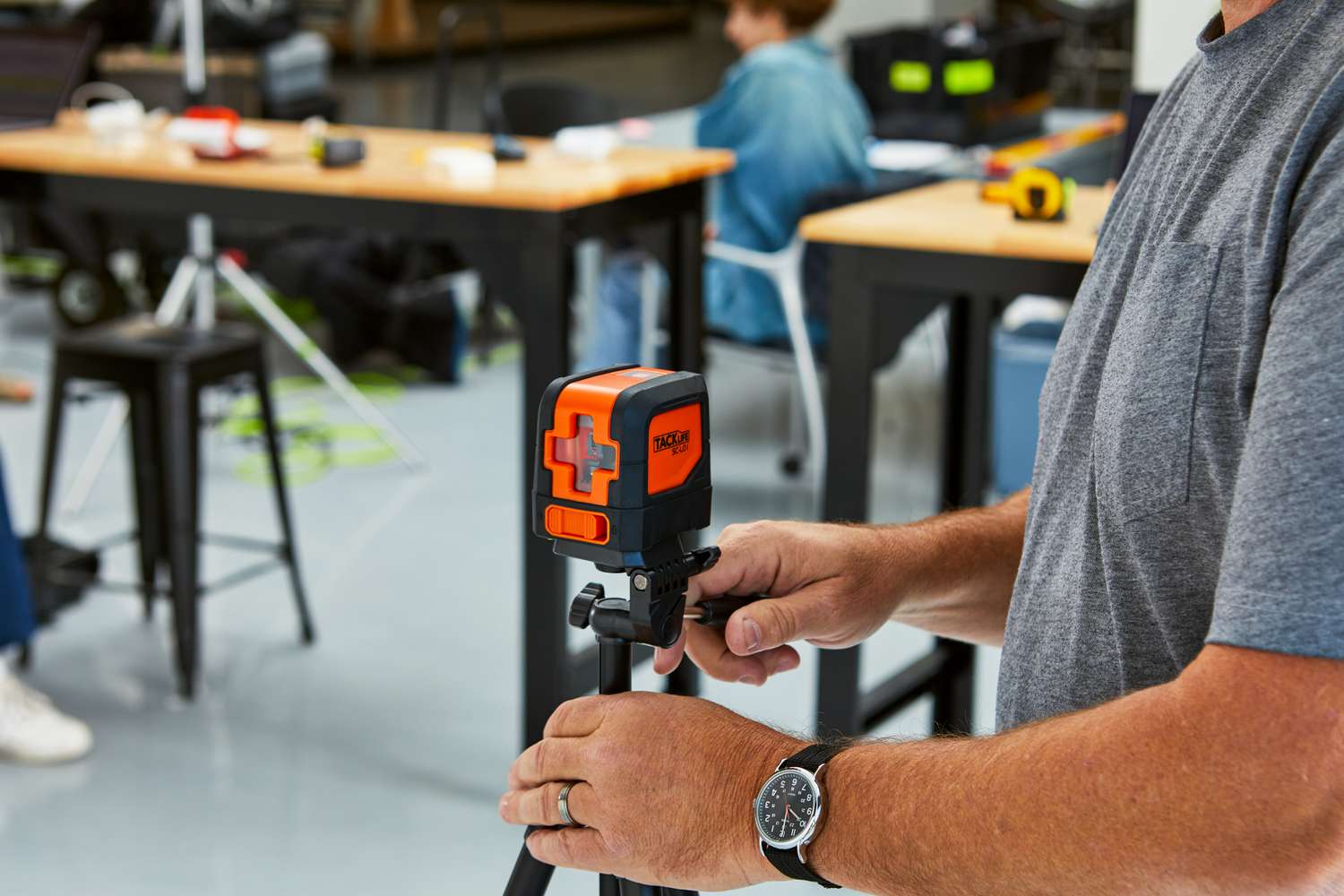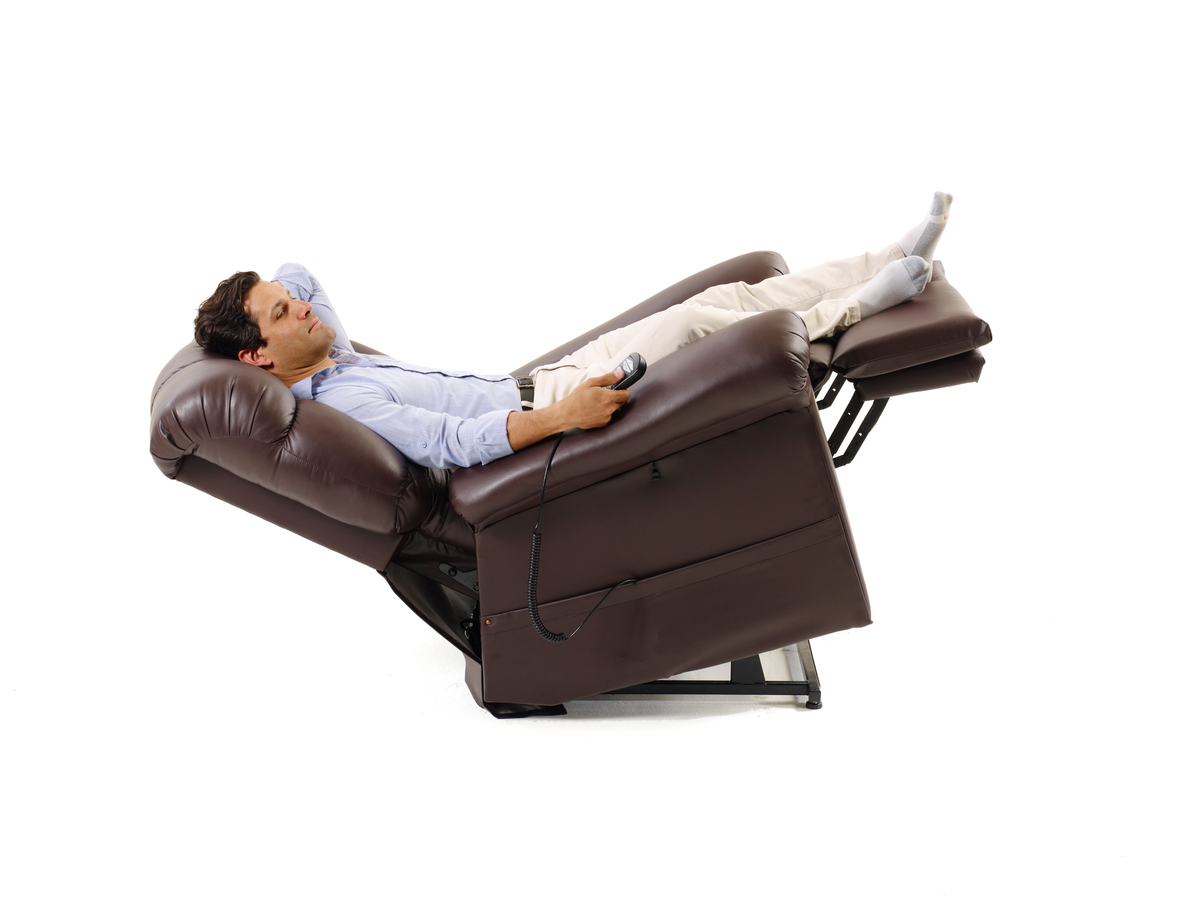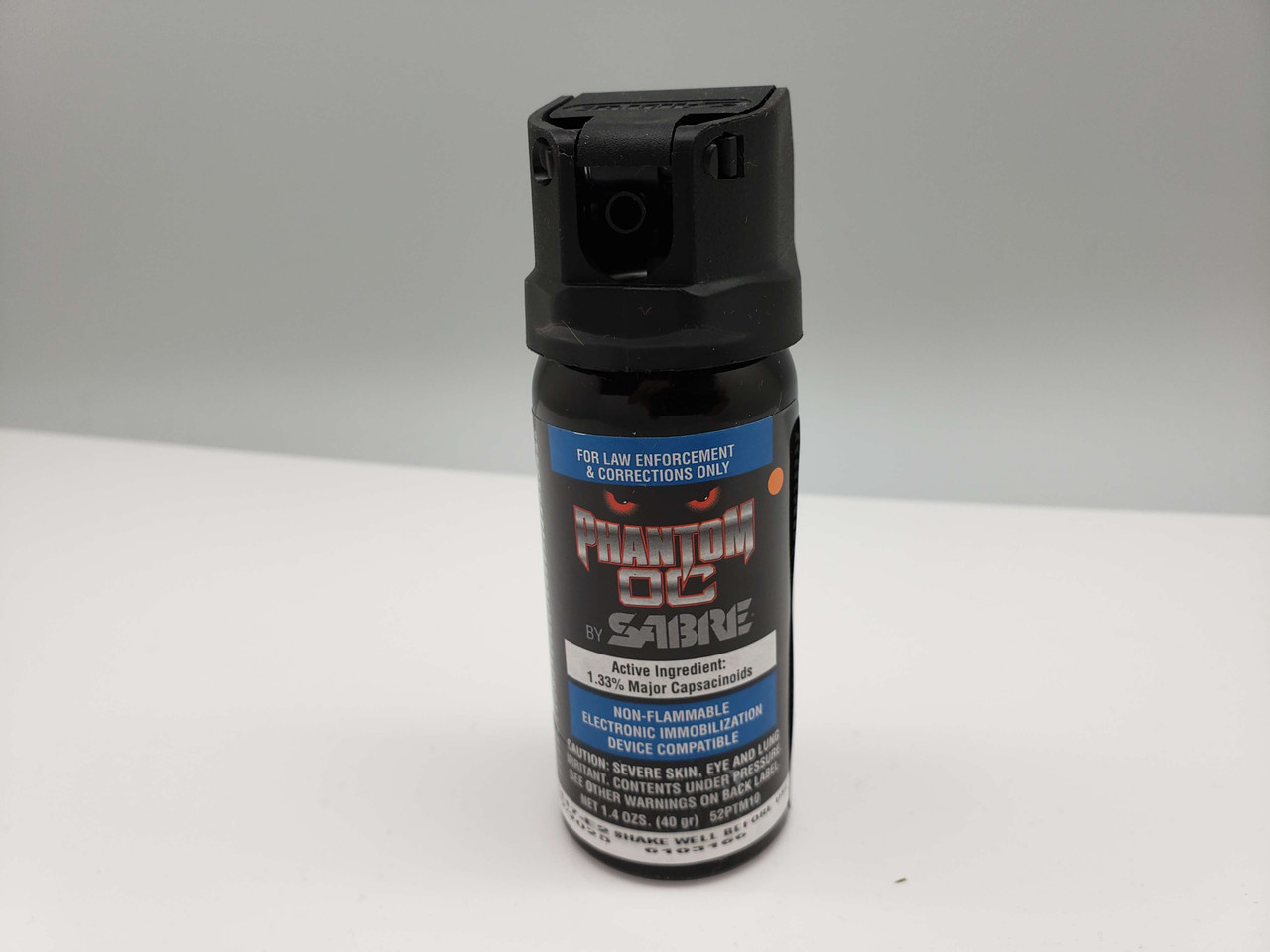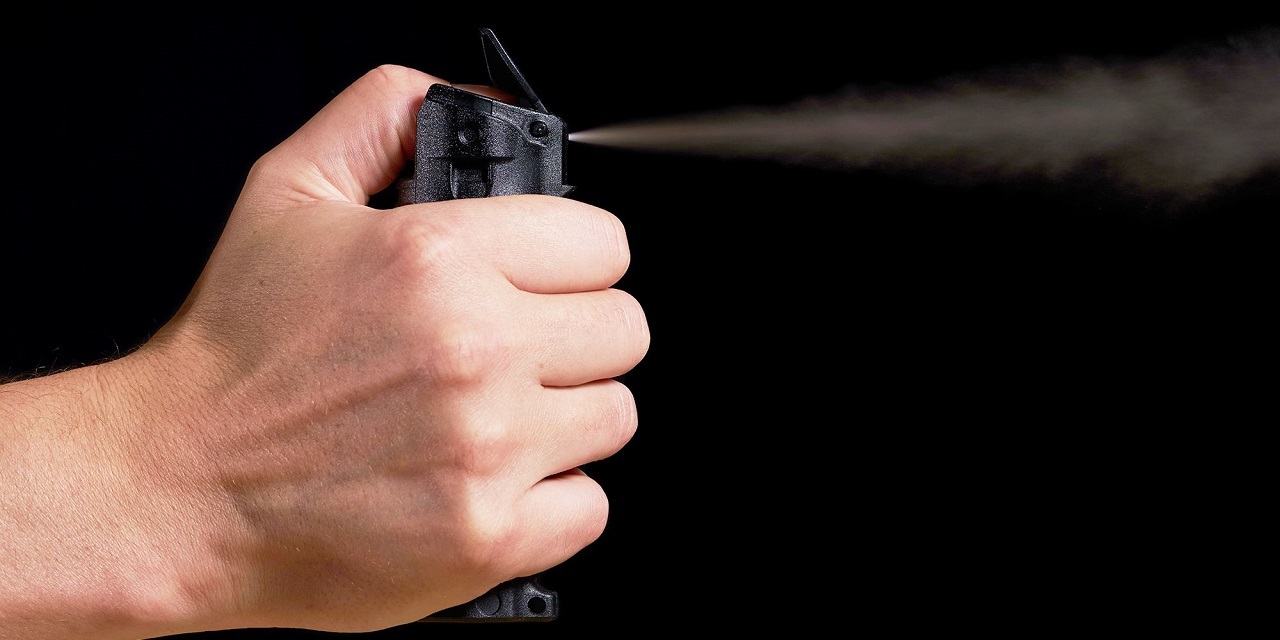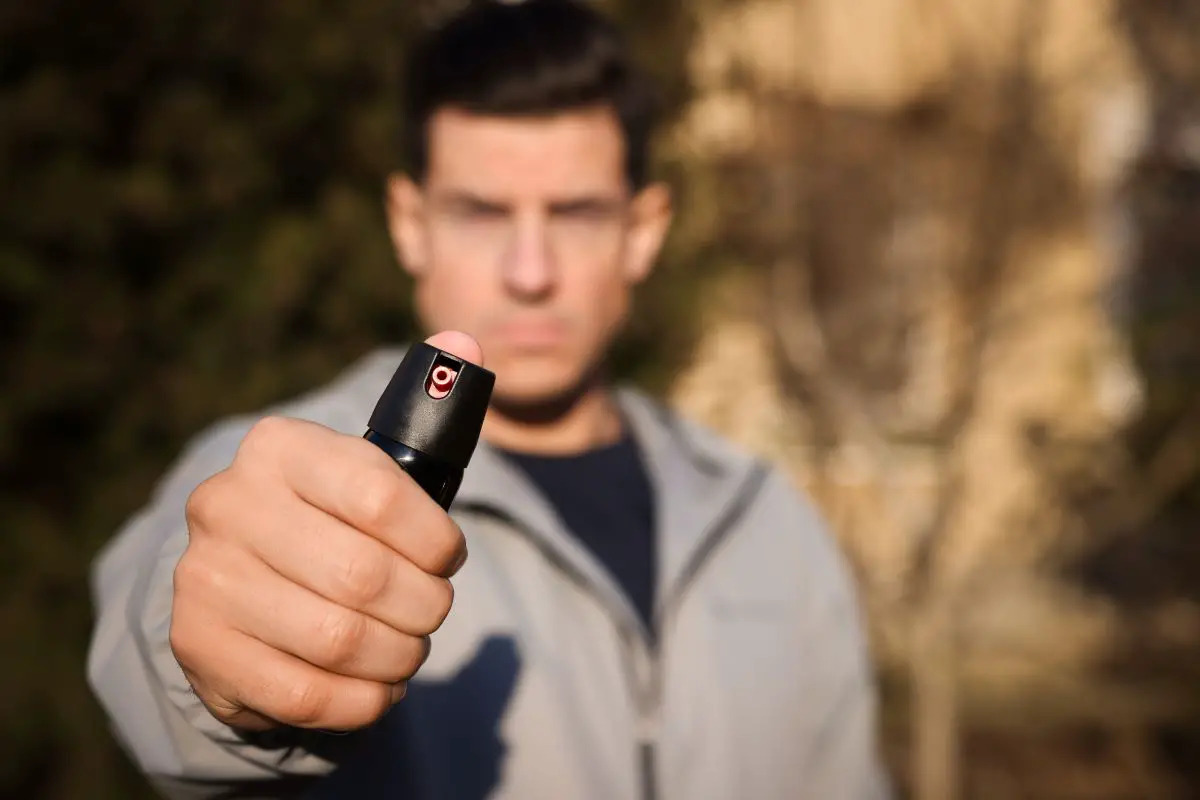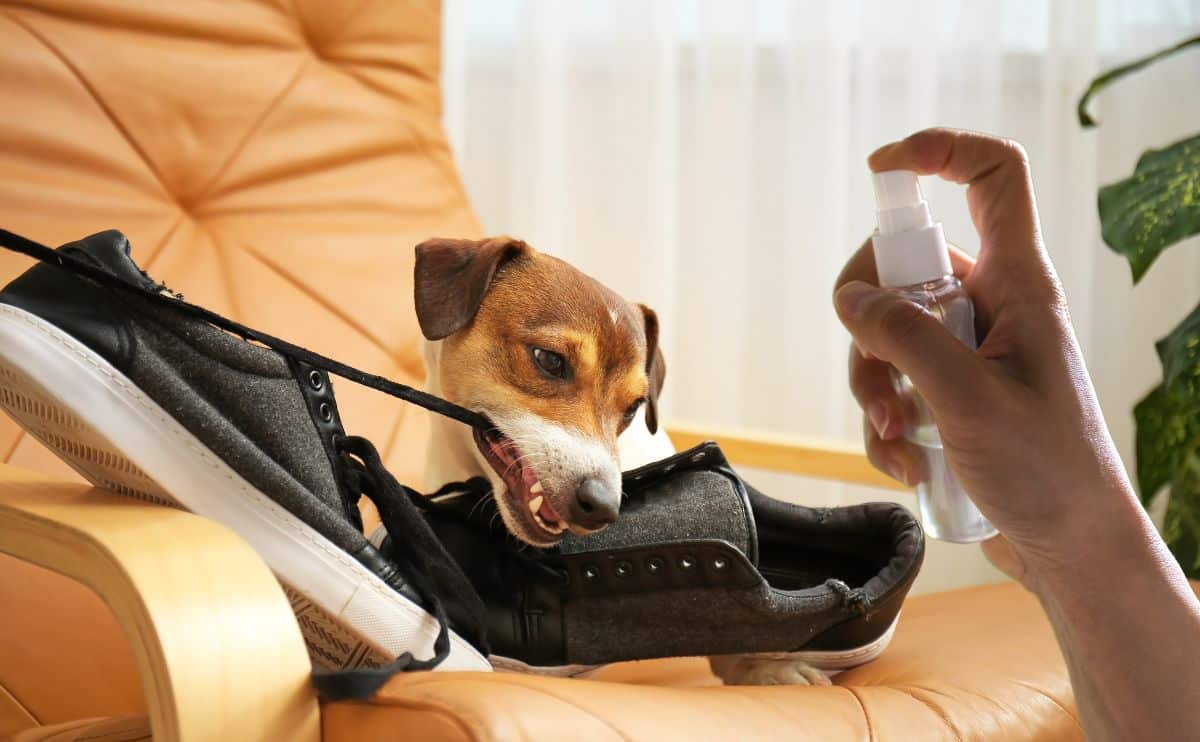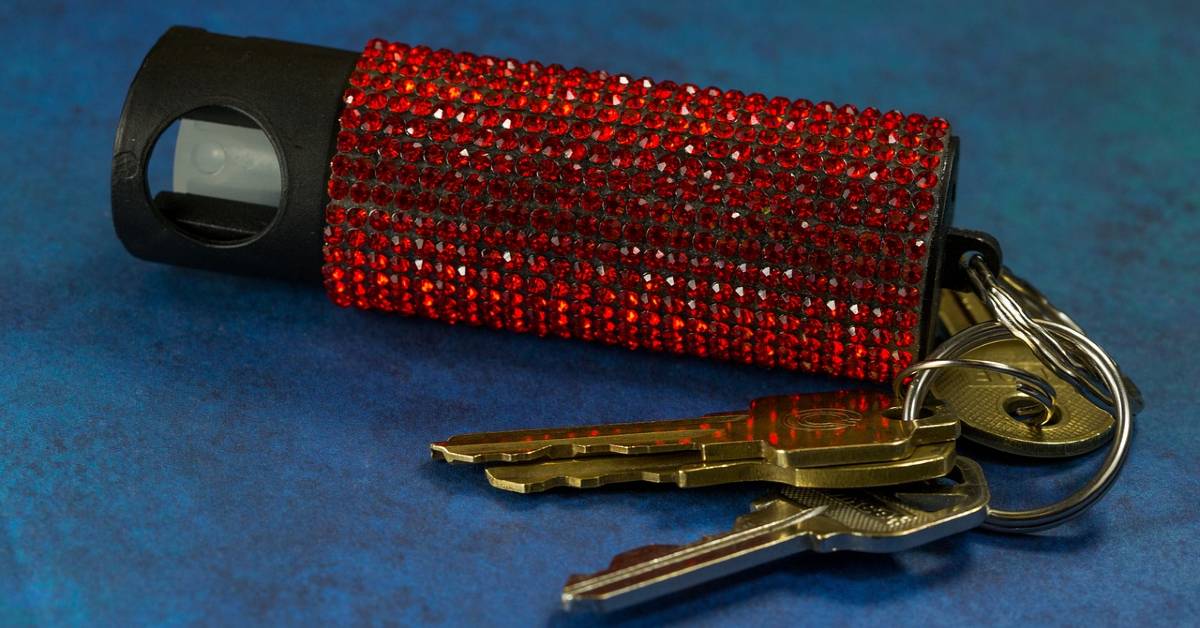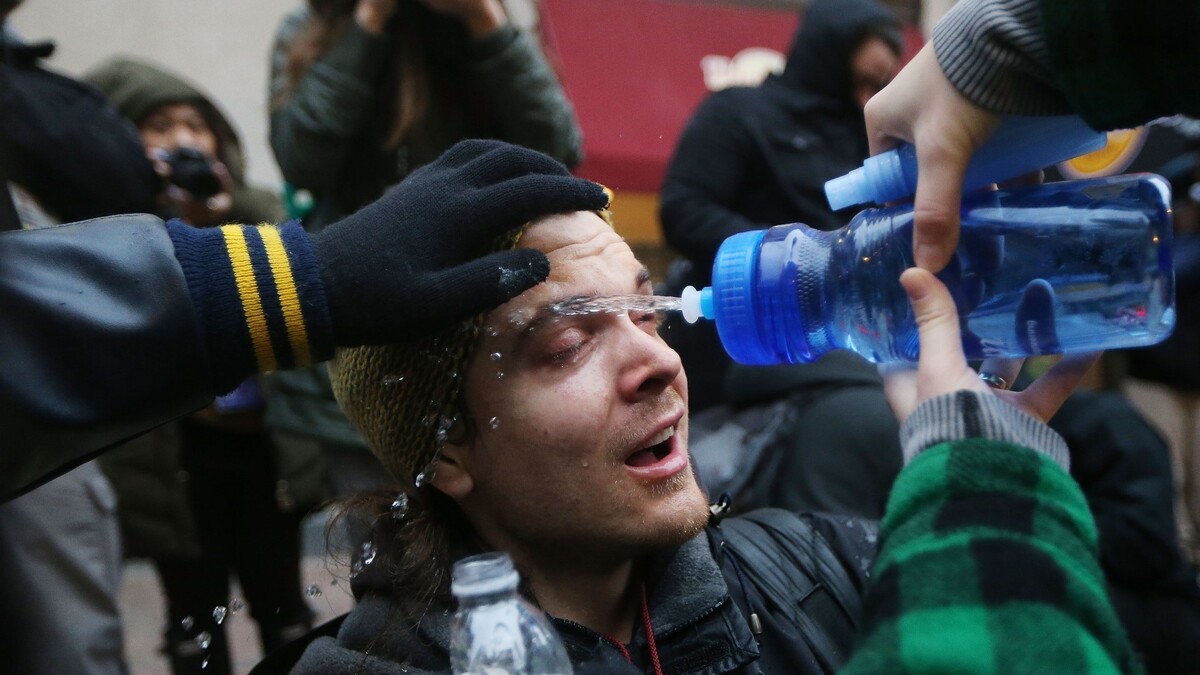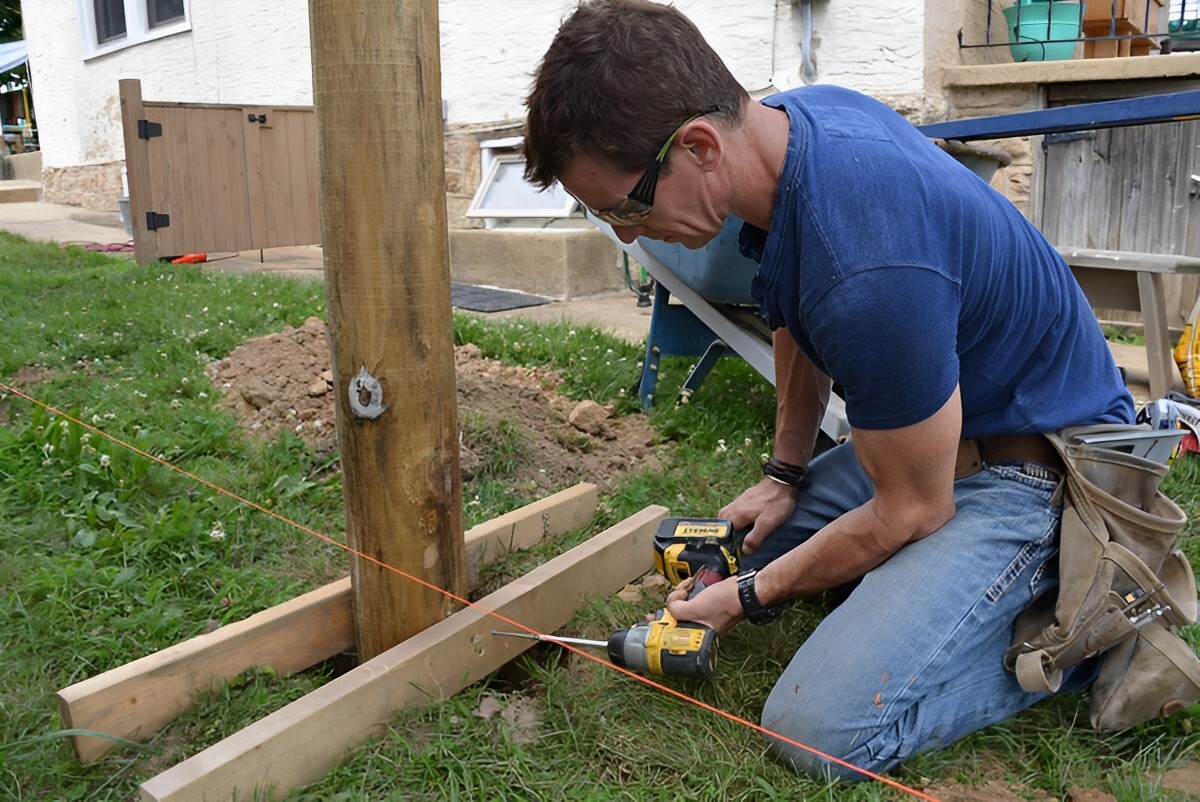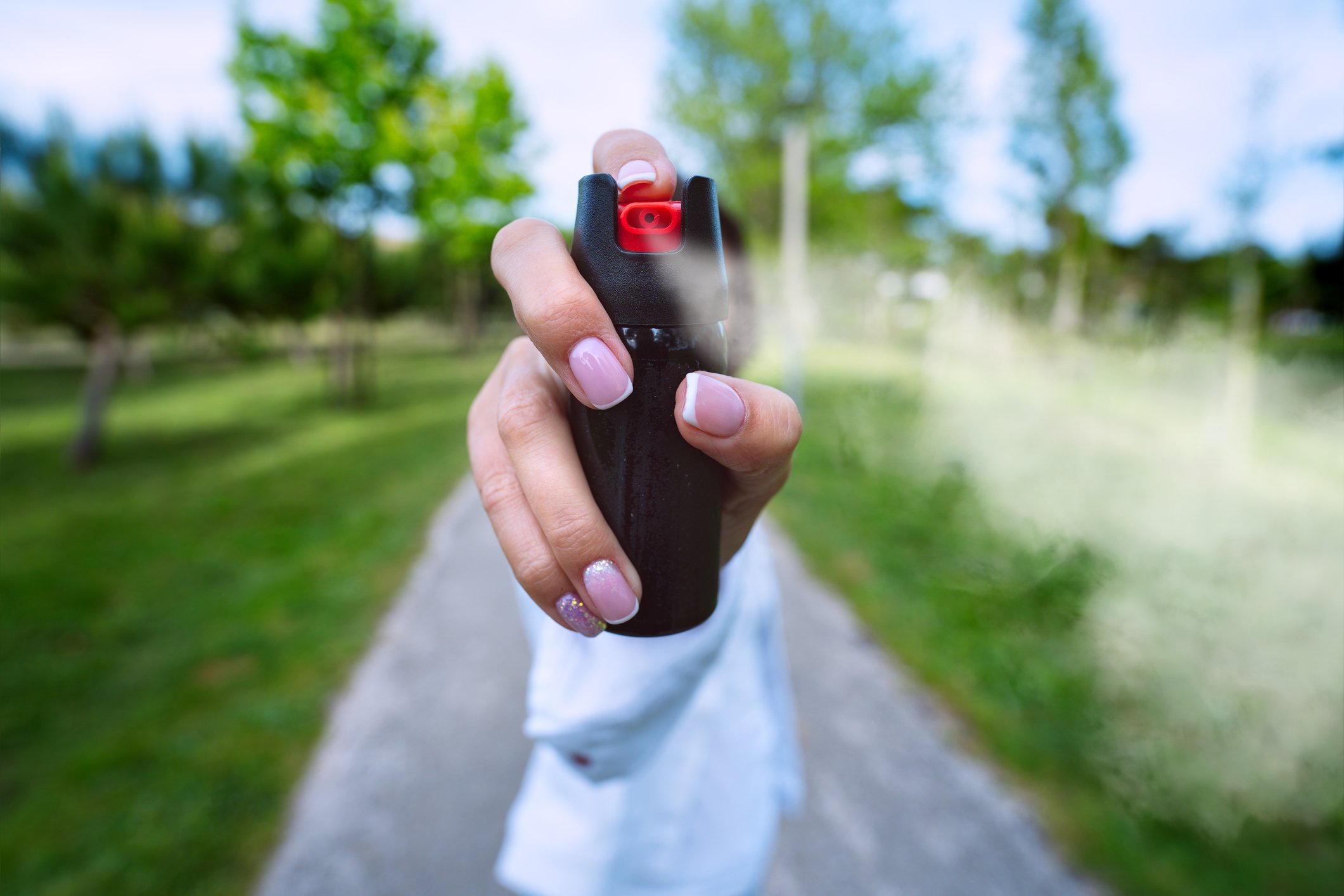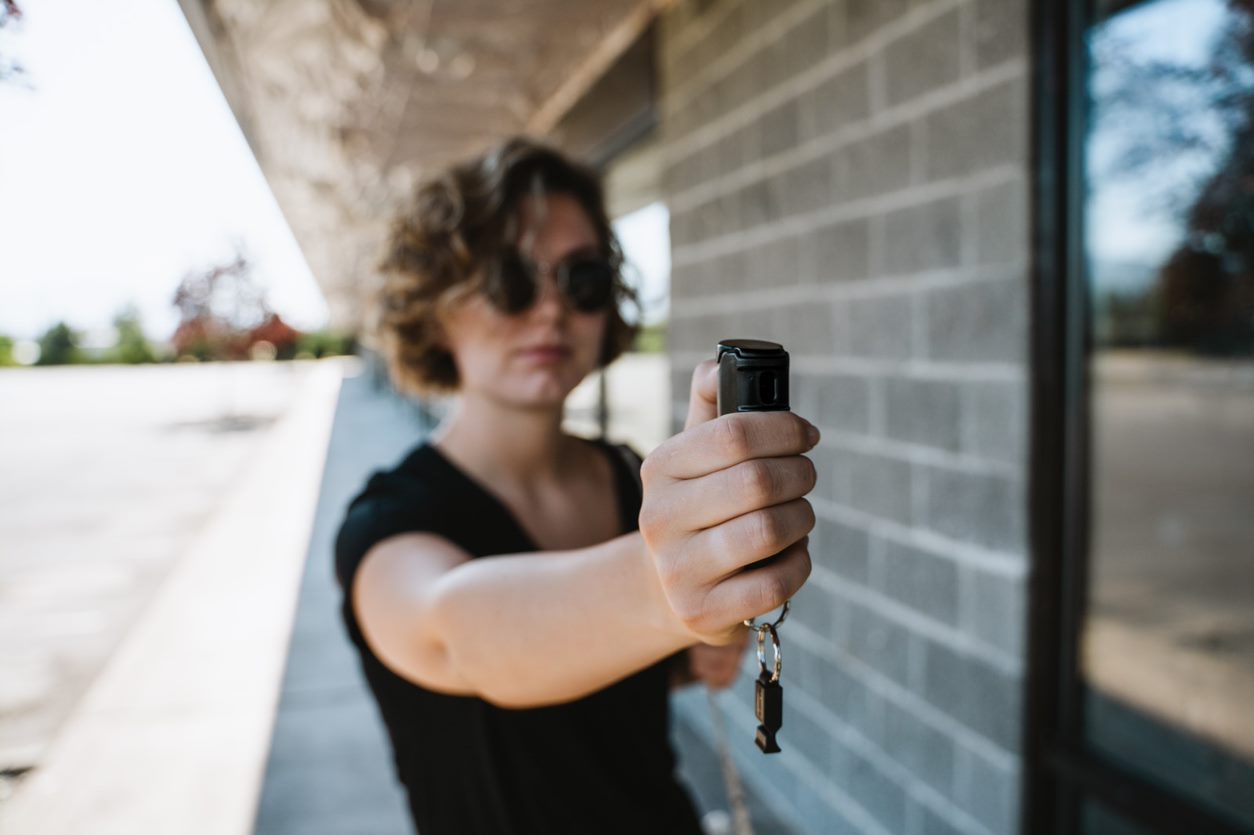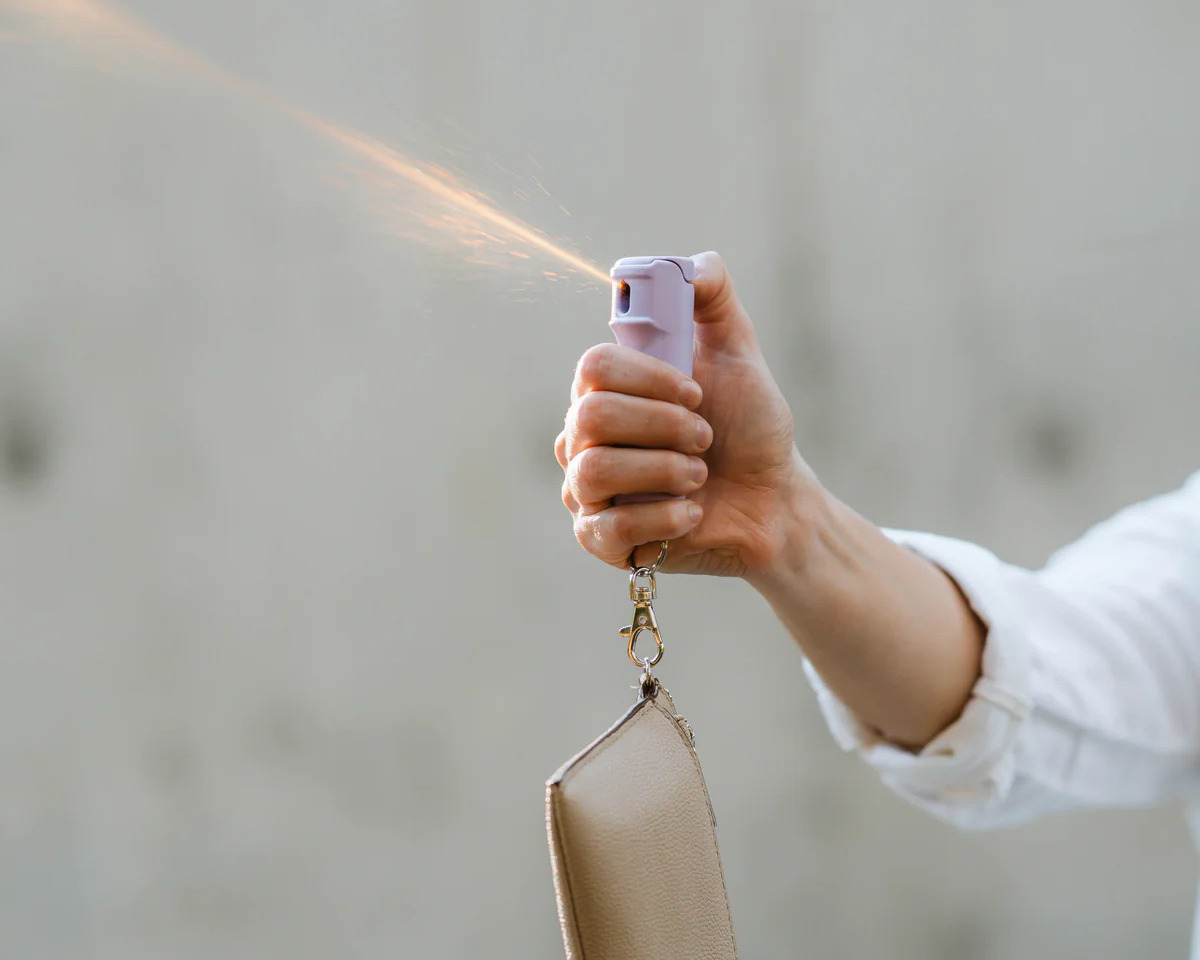Home>Home Security and Surveillance>How Far Does A Pepper Spray Go
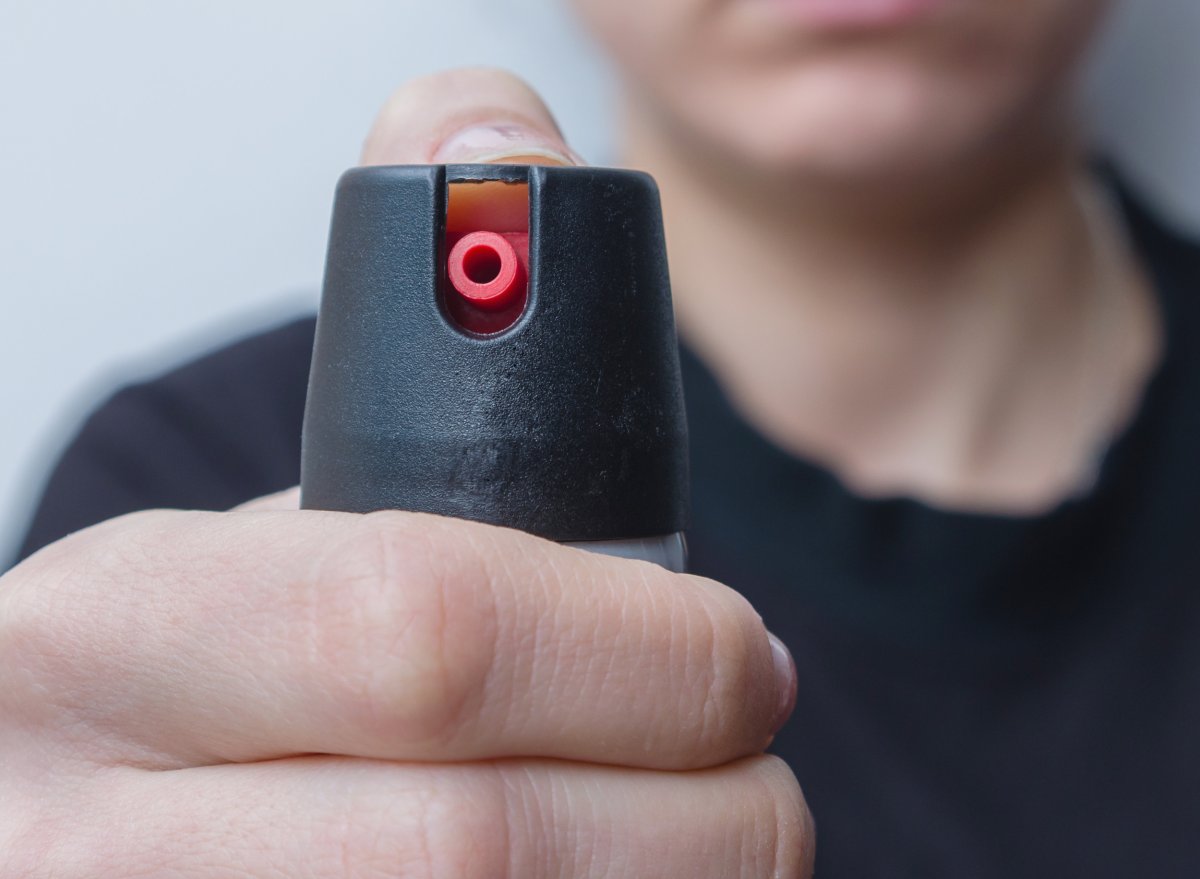

Home Security and Surveillance
How Far Does A Pepper Spray Go
Modified: August 17, 2024
Discover the range of a pepper spray for home security and surveillance. Learn how far it can go to protect you and your loved ones.
(Many of the links in this article redirect to a specific reviewed product. Your purchase of these products through affiliate links helps to generate commission for Storables.com, at no extra cost. Learn more)
Introduction
Welcome to our comprehensive guide on the effective distance of pepper spray! In today’s world, personal safety is a top concern for many individuals. Whether you’re walking alone at night, commuting to work, or simply want to feel more secure in your own home, having the right tools and knowledge to protect yourself is crucial.
Pepper spray has emerged as a popular self-defense tool, widely used by both civilians and law enforcement agencies. It is compact, easy to carry, and provides an immediate way to deter and disable potential attackers. One of the key factors that determines the effectiveness of pepper spray is its range or how far it can reach.
In this article, we will delve into the world of pepper spray and explore the various factors that influence its effective distance. Whether you’re considering purchasing pepper spray for personal use or are simply curious about its capabilities, this guide will equip you with the information you need to make informed decisions about your personal safety.
Key Takeaways:
- Pepper spray can reach 10-15 feet, but wind and user proficiency can affect its effectiveness. Aim for the attacker’s face and follow safety guidelines for best results.
- Understanding pepper spray’s range and factors affecting its effectiveness is crucial for personal safety. Prioritize safety, practice, and follow local laws when using pepper spray.
Read more: How Does Pepper Spray Taste
What is pepper spray?
Pepper spray, also known as OC spray (oleoresin capsicum), is a non-lethal self-defense tool that can temporarily incapacitate an attacker. It is made from a concentrated extract of chili peppers, which contain a substance called capsaicin. When sprayed onto the face or eyes of an individual, it causes intense pain, inflammation, and temporary blindness, giving the victim an opportunity to escape or seek help.
Pepper spray is typically dispensed from canisters that come in various sizes and forms. The most common type is the handheld canister, which is small enough to be conveniently carried in a purse, pocket, or attached to a keychain. Some pepper sprays also come in the form of sprays or foams that can be deployed from a distance using specialized devices.
The use of pepper spray for self-defense purposes is legal in most jurisdictions, but it is important to familiarize yourself with the laws and regulations specific to your area before purchasing or using pepper spray.
Pepper spray is not only effective against human attackers, but it can also be used to deter aggressive animals, such as dogs or bears. However, it is important to note that the potency of pepper spray designed for use on animals may be different from that intended for human use.
Overall, pepper spray is a powerful and accessible tool that can provide an added layer of security and peace of mind in potentially dangerous situations.
How does pepper spray work?
Pepper spray is designed to incapacitate an attacker by causing temporary blindness, extreme irritation, and difficulty breathing. The active ingredient in pepper spray, capsaicin, is a potent irritant that affects the eyes, nose, throat, and respiratory system.
When pepper spray is deployed, it irritates the mucous membranes of the eyes, causing them to swell and produce tears. This intense burning sensation creates temporary vision impairment, making it difficult for the attacker to see and pursue their target.
In addition to affecting the eyes, pepper spray also causes inflammation of the respiratory system and the lining of the nose and throat. This leads to coughing, difficulty breathing, and a feeling of choking, further incapacitating the attacker.
The effects of pepper spray are immediate and can last anywhere from 15 to 45 minutes, depending on various factors such as the concentration of capsaicin and the individual’s tolerance level. It is important to note that pepper spray is considered a non-lethal self-defense tool and does not cause any long-term damage to the attacker.
It is worth mentioning that pepper spray is not foolproof, and its effectiveness can vary depending on the circumstances. Factors like wind direction, distance, and the attacker’s tolerance to capsaicin can affect the overall effectiveness of the spray. Therefore, it is crucial to aim for the attacker’s face and make sure to deliver multiple bursts if necessary to ensure maximum effectiveness.
Overall, the temporary and debilitating effects of pepper spray make it an effective tool for self-defense, providing individuals with a means to protect themselves in potentially dangerous situations.
Factors affecting the distance of pepper spray
The effective distance of pepper spray can vary depending on several factors, which are important to consider when using or purchasing pepper spray for self-defense. Understanding these factors will help you make informed decisions and maximize the effectiveness of pepper spray in different situations.
1. Concentration of capsaicin: The potency of pepper spray is determined by the concentration of capsaicin, the active ingredient. Higher concentrations typically result in a greater effective range and a more intense reaction from the attacker.
2. Canister design: The design of the pepper spray canister can also influence the distance it can reach. Some canisters are equipped with nozzles that allow for a more focused stream, while others disperse the spray in a wider cone-shaped pattern. A focused stream can travel farther, while a wider dispersion helps target multiple attackers at close range.
3. Environmental conditions: Environmental factors such as wind direction and strength can significantly impact the effectiveness and range of pepper spray. Wind blowing against the direction of spray can cause it to disperse and reduce its range, making it less effective. It is important to take wind conditions into account and position yourself accordingly.
4. Technique and user proficiency: The way you handle and deploy pepper spray can affect its range. Proper technique, such as aiming for the attacker’s face and maintaining a steady hand, can help maximize the distance and accuracy of the spray. It is also essential to familiarize yourself with the specific instructions provided by the manufacturer.
5. Canister maintenance: Ensuring that your pepper spray canister is properly maintained is essential for optimal performance. Regularly check the expiration date and replace the canister when necessary. Additionally, store the canister in a cool and dry place to prevent degradation of the capsaicin content.
Understanding these factors can help you choose the right pepper spray for your needs and use it effectively in real-life situations. It is important to remember that while pepper spray can be a valuable self-defense tool, it is essential to follow local regulations, practice caution, and use it responsibly.
When using pepper spray, it can typically reach a distance of 10-12 feet. It’s important to aim for the attacker’s face and eyes for maximum effectiveness.
Range of pepper spray
The effective range of pepper spray can vary depending on the specific product and its design. Generally, most handheld pepper spray canisters have an average range of 10 to 15 feet. However, it is important to note that the actual range can be influenced by various factors such as wind conditions, canister design, and user proficiency.
Handheld pepper spray canisters typically emit a stream, spray, or foam. The range can vary depending on the delivery method. Stream sprays tend to have a longer range, often reaching up to 15 feet. They create a more focused stream of pepper spray, allowing for better accuracy at a distance. On the other hand, cone sprays and foams disperse the spray in a wider pattern, providing better coverage at close range but with a slightly shorter effective distance.
It is important to remember that the effective range of pepper spray does not necessarily guarantee complete incapacitation of an attacker. The range simply determines the distance at which the spray can effectively reach the intended target. Factors such as wind direction, the attacker’s resistance, and the accuracy of your aim can all impact the overall effectiveness of the spray.
When using pepper spray, it is crucial to aim for the attacker’s face, specifically targeting the eyes, nose, and mouth. This increases the chances of temporarily incapacitating the attacker and creating an opportunity for you to escape or seek help.
Some specialized pepper spray devices, such as pepper spray guns or projectiles, can offer longer ranges, reaching up to 25 feet or more. These devices are designed for situations where an extended distance is required, such as encounters with aggressive animals or situations where maintaining a safe distance is crucial.
It is important to familiarize yourself with the specific range and capabilities of the pepper spray product you choose. Read the product descriptions, consult with experts if needed, and practice using the spray to ensure you are comfortable and confident with its range and effectiveness.
Remember, pepper spray is a non-lethal self-defense tool aimed at temporarily incapacitating an attacker and providing an opportunity to escape or seek help. It is essential to follow local regulations, use pepper spray responsibly, and prioritize personal safety above all else.
Read more: How To Store Pepper Spray
Safety precautions when using pepper spray
While pepper spray can be a valuable tool for self-defense, it is essential to exercise caution and follow safety guidelines to ensure its effective and responsible use. Here are some important safety precautions to keep in mind when using pepper spray:
1. Read and understand the instructions: Before using pepper spray, carefully read the instructions provided by the manufacturer. Familiarize yourself with the product’s features, proper deployment technique, and any specific safety considerations.
2. Practice using the spray: Familiarize yourself with the operation of your pepper spray canister. Practice deploying the spray in a controlled environment to gain confidence and become comfortable using it effectively.
3. Aim for the attacker’s face: When using pepper spray, aim for the attacker’s face, specifically targeting the eyes, nose, and mouth. This increases the chances of temporarily incapacitating the attacker and creating an opportunity for escape.
4. Be aware of wind conditions: Wind can greatly affect the effectiveness and range of pepper spray. Take note of wind direction and position yourself accordingly to prevent the spray from being blown back towards you or bystanders.
5. Keep a safe distance: Maintain a safe distance from the attacker, ideally 6 to 10 feet, to ensure the pepper spray reaches its intended target. However, be prepared to adjust your distance based on the specific range and dispersion of your pepper spray canister.
6. Use in well-ventilated areas: When possible, use pepper spray in open, well-ventilated areas to minimize the chances of inhaling or being affected by excessive pepper spray residue.
7. Be mindful of bystanders: Take care to avoid unintended exposure to bystanders or innocent individuals in the vicinity. Consider their safety and position yourself to minimize the risk of collateral pepper spray exposure.
8. Follow local laws and regulations: Before purchasing or using pepper spray, familiarize yourself with the laws and regulations in your jurisdiction. Some areas may have specific restrictions or requirements regarding the possession and use of pepper spray.
9. Check the expiration date: Pepper spray has a shelf life, typically ranging from 2 to 4 years. Check the expiration date on your canister and replace it as recommended by the manufacturer to ensure optimal performance when needed.
Remember, pepper spray is a self-defense tool that can temporarily incapacitate an attacker, providing you with an opportunity to escape or seek help. However, it should be used responsibly, adhering to legal guidelines and prioritizing the safety of yourself and others.
Conclusion
Pepper spray is a powerful and accessible tool for self-defense, providing individuals with a means to enhance their personal safety. Understanding the effective distance and factors influencing the range of pepper spray is essential for making informed decisions and using it effectively.
Pepper spray, derived from chili peppers and containing capsaicin, acts as an irritant that can temporarily incapacitate attackers by causing intense pain, inflammation, and temporary blindness. It is available in various forms, including handheld canisters, sprays, and foams.
Factors that affect the effective distance of pepper spray include the concentration of capsaicin, canister design, environmental conditions, user proficiency, and proper maintenance. Wind direction, technique, and aiming for the attacker’s face are also important factors to consider when using pepper spray.
The range of handheld pepper spray canisters typically ranges from 10 to 15 feet, but this can vary depending on the specific product and its delivery method. Specialized devices, such as pepper spray guns, may offer longer ranges for specific needs.
When using pepper spray, it is crucial to prioritize safety. Reading and following the manufacturer’s instructions, practicing its use, and being mindful of wind conditions and bystanders are important precautions to take. Additionally, understanding and complying with local laws and regulations is essential.
In conclusion, pepper spray can be a valuable tool for personal safety, providing an added layer of protection in potentially dangerous situations. By understanding its range, factors influencing its effectiveness, and following safety precautions, individuals can feel more empowered and prepared to defend themselves if necessary.
Remember, while pepper spray can help create opportunities for escape, it is always important to prioritize personal safety, avoid unnecessary risks, and seek help from law enforcement authorities when needed.
Frequently Asked Questions about How Far Does A Pepper Spray Go
Was this page helpful?
At Storables.com, we guarantee accurate and reliable information. Our content, validated by Expert Board Contributors, is crafted following stringent Editorial Policies. We're committed to providing you with well-researched, expert-backed insights for all your informational needs.
